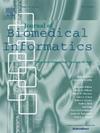Taming vision transformers for clinical laryngoscopy assessment
IF 4
2区 医学
Q2 COMPUTER SCIENCE, INTERDISCIPLINARY APPLICATIONS
引用次数: 0
Abstract
Objective:
Laryngoscopy, essential for diagnosing laryngeal cancer (LCA), faces challenges due to high inter-observer variability and the reliance on endoscopist expertise. Distinguishing precancerous from early-stage cancerous lesions is particularly challenging, even for experienced practitioners, given their similar appearances. This study aims to enhance laryngoscopic image analysis to improve early screening/detection of cancer or precancerous conditions.
Methods:
We propose MedFormer, a laryngeal cancer classification method based on the Vision Transformer (ViT). To address data scarcity, MedFormer employs a customized transfer learning approach that leverages the representational power of pre-trained transformers. This method enables robust out-of-domain generalization by fine-tuning a minimal set of additional parameters.
Results:
MedFormer exhibits sensitivity-specificity values of 98%–89% for identifying precancerous lesions (leukoplakia) and 89%–97% for detecting cancer, surpassing CNN counterparts significantly. Additionally, when compared to the two selected ViT-based models, MedFormer also demonstrates superior performance. It also outperforms physician visual evaluations (PVE) in certain scenarios and matches PVE performance in all cases. Visualizations using class activation maps (CAM) and deformable patches demonstrate MedFormer’s interpretability, aiding clinicians in understanding the model’s predictions.
Conclusion:
We highlight the potential of visual transformers in clinical laryngoscopic assessments, presenting MedFormer as an effective method for the early detection of laryngeal cancer.

用于临床喉镜检查评估的驯服视力变换器。
目的:喉镜检查是诊断喉癌(LCA)的关键,由于观察者之间的高度变异性和对内镜专家专业知识的依赖,喉镜检查面临着挑战。区分癌前病变和早期癌性病变尤其具有挑战性,即使对经验丰富的医生来说也是如此,因为它们的外观相似。本研究旨在加强喉镜图像分析,以提高早期筛查/发现癌症或癌前病变。方法:提出一种基于视觉变换器(Vision Transformer, ViT)的喉癌分类方法MedFormer。为了解决数据短缺问题,MedFormer采用了一种定制的迁移学习方法,利用了预训练变压器的表征能力。该方法通过微调最小附加参数集实现鲁棒的域外泛化。结果:MedFormer识别癌前病变(白斑)的敏感性-特异性值为98%-89%,检测癌症的敏感性-特异性值为89%-97%,明显超过CNN。此外,与两种选定的基于vit的模型相比,MedFormer也表现出卓越的性能。在某些情况下,它也优于医生的视觉评估(PVE),并在所有情况下匹配PVE的表现。使用类激活图(CAM)和可变形贴片的可视化展示了MedFormer的可解释性,帮助临床医生理解模型的预测。结论:我们强调了视觉变形在临床喉镜评估中的潜力,表明MedFormer是一种早期发现喉癌的有效方法。
本文章由计算机程序翻译,如有差异,请以英文原文为准。
求助全文
约1分钟内获得全文
求助全文
来源期刊

Journal of Biomedical Informatics
医学-计算机:跨学科应用
CiteScore
8.90
自引率
6.70%
发文量
243
审稿时长
32 days
期刊介绍:
The Journal of Biomedical Informatics reflects a commitment to high-quality original research papers, reviews, and commentaries in the area of biomedical informatics methodology. Although we publish articles motivated by applications in the biomedical sciences (for example, clinical medicine, health care, population health, and translational bioinformatics), the journal emphasizes reports of new methodologies and techniques that have general applicability and that form the basis for the evolving science of biomedical informatics. Articles on medical devices; evaluations of implemented systems (including clinical trials of information technologies); or papers that provide insight into a biological process, a specific disease, or treatment options would generally be more suitable for publication in other venues. Papers on applications of signal processing and image analysis are often more suitable for biomedical engineering journals or other informatics journals, although we do publish papers that emphasize the information management and knowledge representation/modeling issues that arise in the storage and use of biological signals and images. System descriptions are welcome if they illustrate and substantiate the underlying methodology that is the principal focus of the report and an effort is made to address the generalizability and/or range of application of that methodology. Note also that, given the international nature of JBI, papers that deal with specific languages other than English, or with country-specific health systems or approaches, are acceptable for JBI only if they offer generalizable lessons that are relevant to the broad JBI readership, regardless of their country, language, culture, or health system.
 求助内容:
求助内容: 应助结果提醒方式:
应助结果提醒方式:


